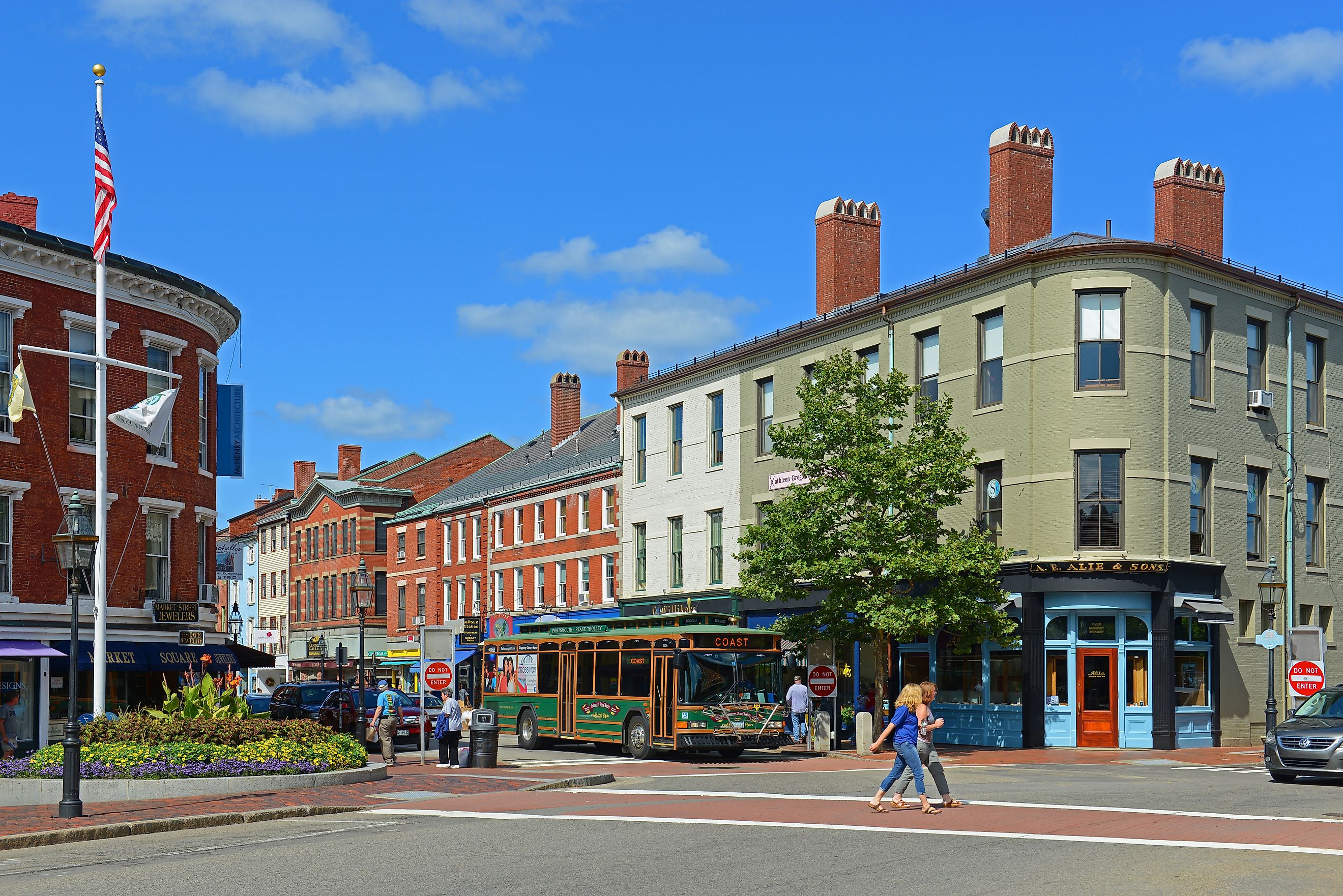
9 Of The Most Walkable Towns In New Hampshire
New Hampshire is hike-able, for sure, but what about walkable? Yes, those can be interchangeable but are often differentiated by terrain. Though the state is lush and mountainous and filled with hiking trails of all elevations and conditions, it also contains towns with flat, paved paths that provide easy access to booming businesses and historic wonders. Here are nine such places where you can walk downtown or hike up a mountain in versatile New Hampshire.
Exeter
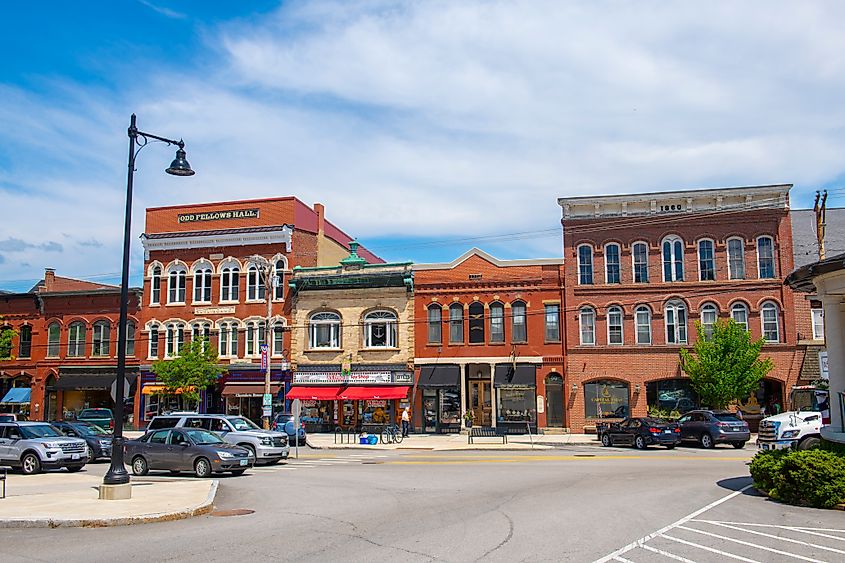
Do not rush to exit Exeter. Instead, join a walking tour to dally around Exeter's natural and historic attractions. Most of the tours are self-guided but are aided by online synopses and booklets. For instance, a Walking Trail by the River is recommended for those wanting to see herons, bald eagles, and the 1771 Powder House along the Squamscott River. Historic Homes of Exeter is a tour for architecturally curious adventurers that covers sites like the Amos Tuck House and John Gilman House. The Exeter Historical Society's Walking Tour of Exeter encompasses all those sites and more via a 40-stop expedition.
Meredith
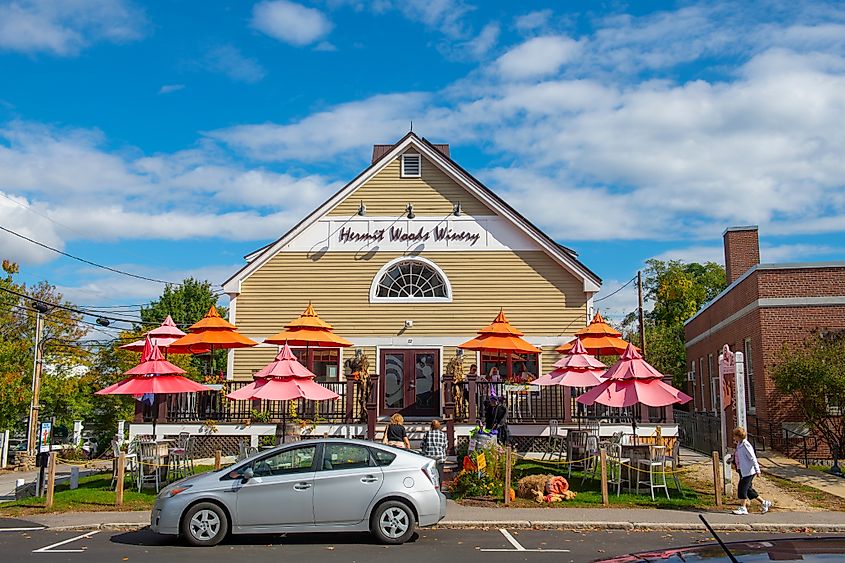
As a resort town in the Lakes Region, Meredith is an outdoor person's paradise. Hiking trails cut through preserves like the Page Pond Community Forest, Meredith Community Forest, and Swasey Park, while pedestrian-friendly sidewalks funnel foot traffic into Meredith Village. After roughing it in the woods, relax downtown at George's Diner, BarnZ's Meredith Cinema, the 48 Main Cafe & Creperie, Hermit Woods Winery & Eatery, Town Docks Restaurant, and Mill Falls Marketplace. Of course, you can really unwind in the two lakes that sandwich the village: Lake Waukewan and Lake Winnipesaukee.
Conway
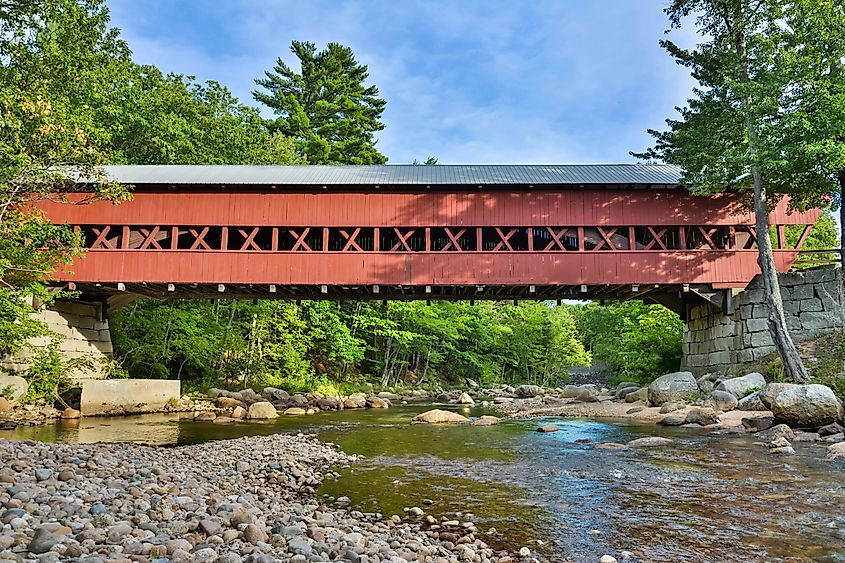
Conway is a town of about 9,800 people that consists of three main villages: Conway, North Conway, and Center Conway. Conway is the most populous, but North Conway, with its outlet shops and art installations, is arguably the most walkable. North Conway's hub of pedestrian activity is called Settlers Green. One can saunter along paved paths or soft green grass, going from stores like the Lindt Chocolate Shop to eateries like Mountain Moose Noodles & Asian Street Food, before joining the Public Art Walk. Exhibits along the walk include The Bronze Bears and The Red Fox. If you would rather see real animals, explore the numerous nature trails around the Saco River or inside the White Mountain National Forest.
Peterborough
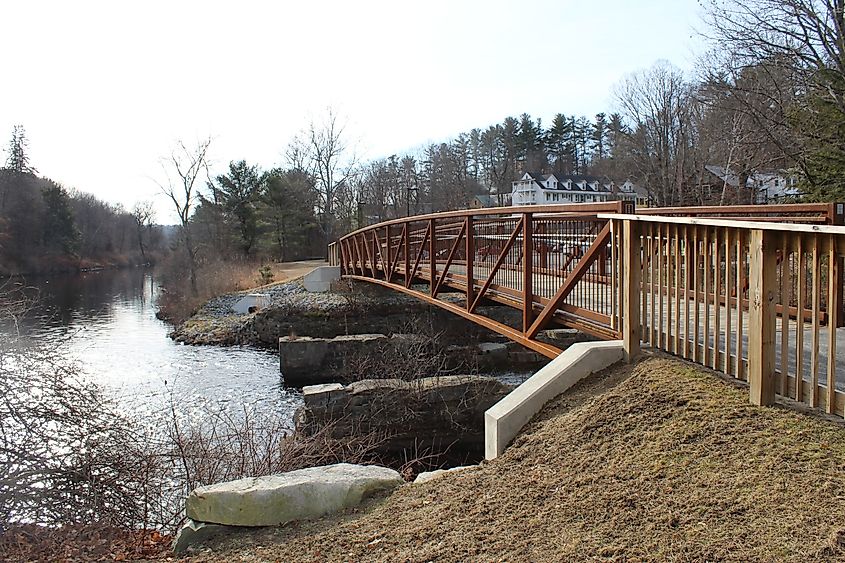
As a near-300-year-old settlement, Peterborough has tons of history that can be explored during guided and self-guided walking tours. If you want to be in control, pick such sites as the Brick Ends House (c. 1824) and the Old Bell Factory tablet (tablet erected in 1929; factory built in 1809) and go at your own pace and order. If you would rather an expert lead the way, visit the Monadnock Center for History and Culture. Its upcoming events include the Women of Peterborough Walking Tour and the Visitors from the Past: Village Cemetery Tour.
Littleton
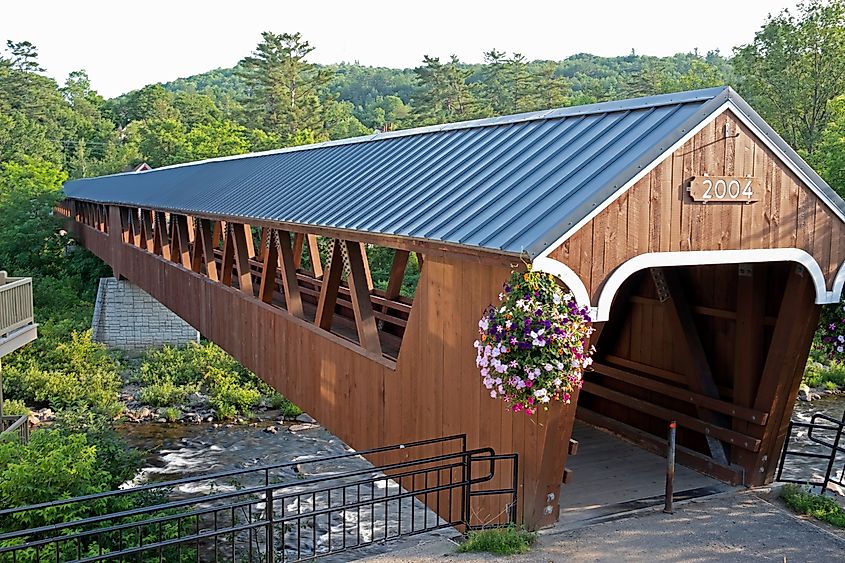
Littleton sits above the White Mountain National Forest and along the Ammonoosuc River. Naturally, it offers spectacular nature trails, but its most walkable section is arguably the downtown district. Tourists can cross the Riverwalk Covered Bridge to visit a brewpub called Schilling Beer Co. and a candy store called Chutters. In addition to being sweet and scrumptious, both businesses are historical. The Chutters building is over 120 years old and has a record 112-foot candy counter, while Schilling Beer is in a restored gristmill from circa 1797. Nearly two dozen more historic sites can be found during the Downtown Littleton Walking Tour.
Troy
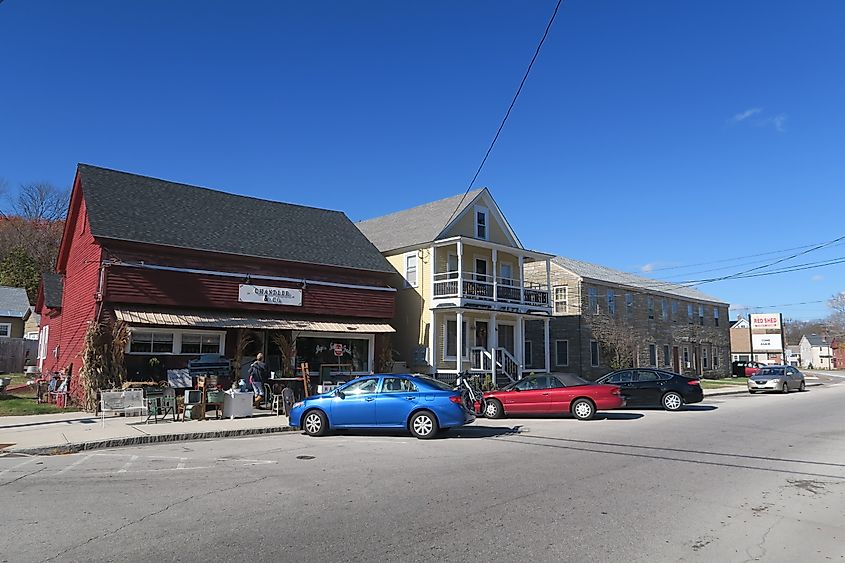
Like Peterborough, Troy is a historic town in the Monadnock Region. A "monadnock" is a mountain that protrudes from otherwise flat terrain. Mount Monadnock is the monadnock that named the region and looms 2,000ish feet above Troy. After scaling the mountain, you can take a more leisurely stroll through the 2,000ish-person town, stopping to see the Trinitarian Congregational Church (c. 1835) and Kimball Hall (c. 1901) among many other heritage buildings. The cherry on top of your traipsing Troy vacation can be Monadnock Berries, a u-pick berry farm so beautiful that it also hosts weddings.
Wolfeboro
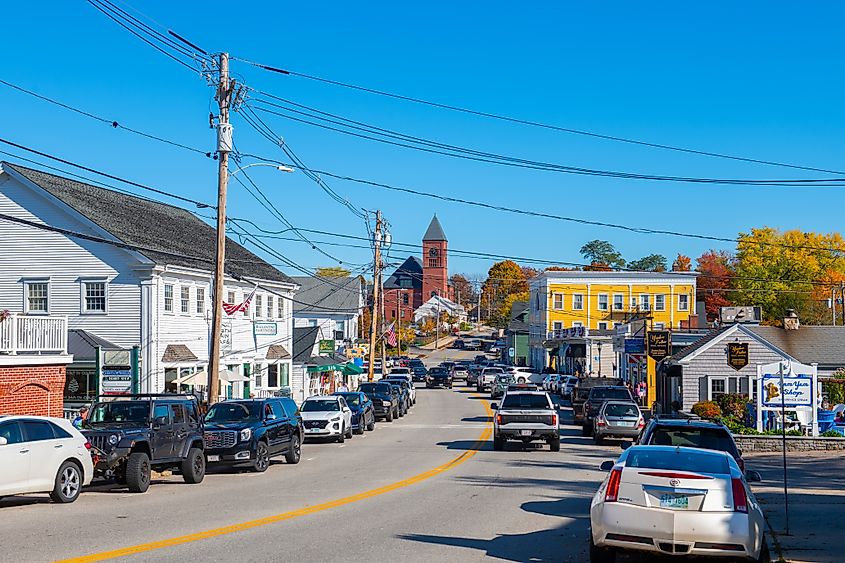
Wolf down Wolfeboro, a Lakes Region locale drenched in walkable eateries. They include Nolan's Brick Oven Bistro, Bailey's Bubble, North Main Café, Garwoods Restaurant & Pub, The Bay Diner, El Centenario, Marker 21, the Yum Yum Shop, the Downtown Grill, and the Wolfeboro Dockside Grille and Dairy Bar. Most of those establishments overlook Lake Winnipesaukee, whose beautiful banks also offer self-guided treks. Otherwise known as "hikes," they can be done in the Sewall Woods Conservation Area. Other hikes can be done around Lake Wentworth on the east side of town.
Hanover
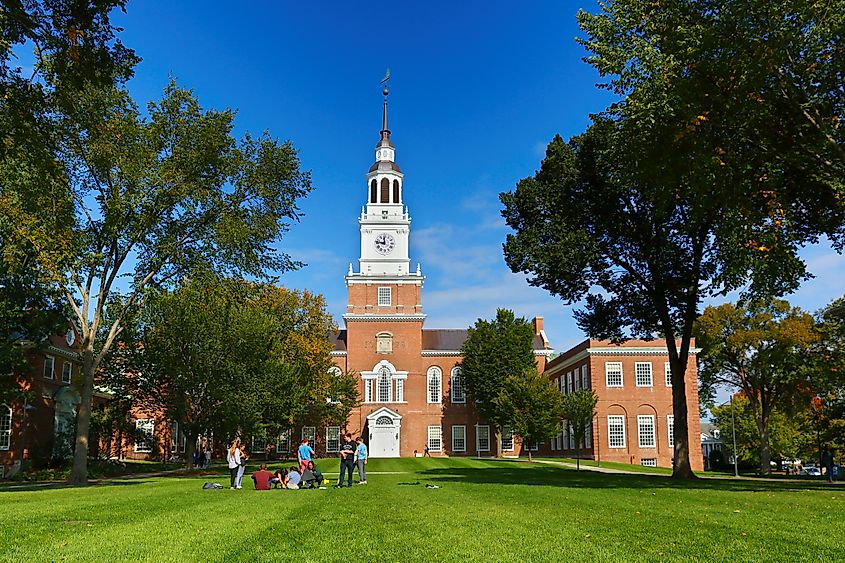
Hanover is a triple threat of walkability. It not only has business-lined sidewalks and miles of nature trails but also a 269-acre college campus. Thus, after wandering into restaurants like Lou's and Murphy's and hiking through preserves like the Baum Conservation Area and Moose Mountain, you can tour the historic buildings and lush land of Dartmouth College. This Ivy League institution may not have ivy, but it does display other kinds of plants in The Green and around its oldest haunts such as the Webster Cottage and the Hanover Inn. Both establishments date to circa 1780.
Portsmouth
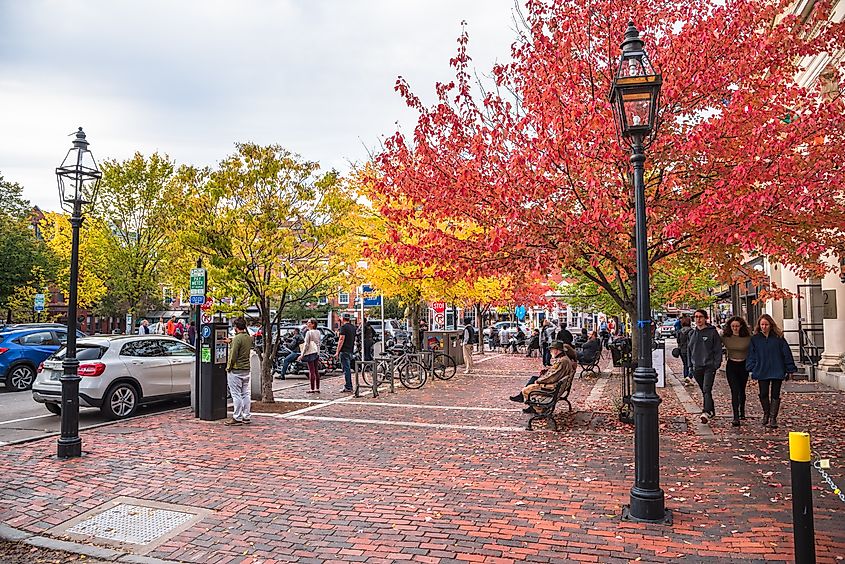
Although much bigger than the other communities on this list, Portsmouth may be more walkable than the rest of them combined. It is technically a city, but its 22,000ish-person population is small enough for us. And any of the dozens of Portsmouth walking tours should be good enough for you. They range from the Historic Portsmouth Walking Tour to the LGBTQ+ Walking Tour to the Women of Portsmouth Walking Tour to the Along the Waterfront Walking Tour to the Portsmouth Harbour Trail Tour to a number of tours along the Black Heritage Trail of New Hampshire. All of those are guided, but there is also a self-guided tour that covers downtown icons like the Sherburne House (c. 1695), Warner House (c. 1716), and Stoodley's Tavern (c. 1761).
As you hopefully just read, New Hampshire is not only for hiking. Although you can hike through nature in Exeter, Meredith, Conway, Peterborough, Littleton, Troy, Wolfeboro, Hanover, and Portsmouth, you can combine those high-octane excursions with peaceful walks to shops, restaurants, art exhibits, and historic sites. No matter the terrain, all you need to conquer small-town New Hampshire is your own two feet—in proper footwear, of course.











